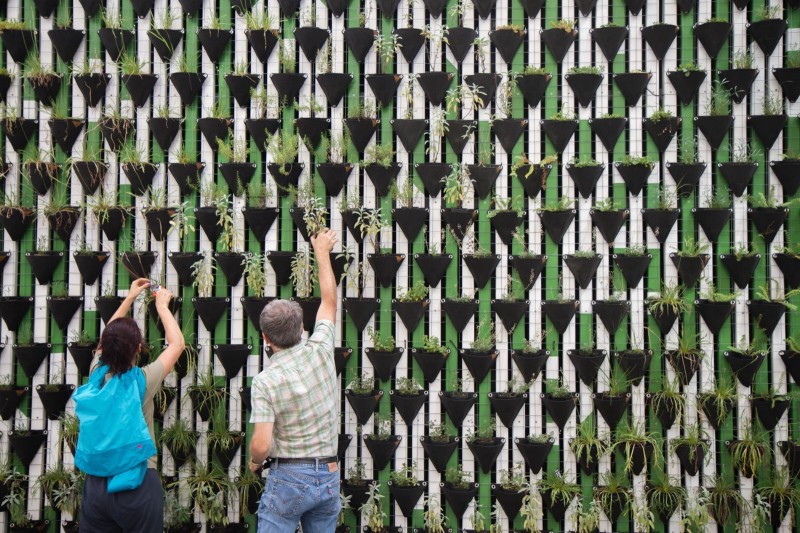
If you haven’t heard it before: good leaders are like master gardeners — fostering the right environment for a team is critical to success. For big corporations that want to go in a new direction (such as Woot, which began as a way of clearing excess stock before becoming a daily deals site acquired by Amazon) or need to pull themselves back from the brink (i.e when Steve Jobs returning to Apple in 1996 to scale its projects down, redefine the focus and ultimately make the company profitable again), the gardeners will be pivotal. But, the reality is that while many leaders may have started out as such, by this stage, they are actually farmers.
The difference?
Farmers are career gardeners, not passionate hobbyists and are part of a larger industry. The seasoned CTOs and engineers have tried and tested the soil and conditions, invested in acres of land and a huge volume of crops, purchased state-of-the-art machinery to ensure sustainability and employed workers that know how to maximise the harvest. As a first-time CTO or tech leader in an early stage startup however, this is a long way off.
How does your garden grow?
Silver bells and cockle shells are deemed an extravagant purchase at this point. Similarly, acquiring a combine harvester for a mere allotment is overzealous and can leave you without funds for cultivation, staff that don’t know how to operate heavy machinery, or the risk that it will weigh down on infant yields. While this may sound like a load of manure, it’s not. When 90% of startups fail — many due to cash flow problems or failing to define their mission, values and culture — it pays to lay the foundations adequately.
Whether you’re a disruptor who’s founded their own startup or been brought in as development managers by someone who needs your skills to make their product viable, now is the time to grab your spade and dust off those wellies. Because all great gardeners follow the instructions on the label:
- Design your landscape — When you’re a first-time tech leader, don’t set your sights on the Hanging Gardens of Babylon when the Chelsea Flower Show will suffice. Decide who you need on your team to get things moving and where you’re going to position them; as with seedlings, each person needs the space and exact conditions to perform well.
- Plant the (right) seeds — Hiring the right people is a skill and what you need from any good shrub is reliability and adaptability. Early startups require an all-hands-on-deck approach; it doesn’t matter if you recruit the best developer in the world, if they’re unwilling to learn what goes on at system level. Bug problems are inevitable so if they’re unable to survive them, there’ll be a limit to their functionality. This is especially problematic when resources are finite.
- Feeding and watering — Unless you prefer minimalist horticulture and are aiming to recreate the Sahara, you need to nourish your team in order for them to develop. Provide them with the tools, training and resources they require in order to get the outcomes you want and the company needs.
- Nurturing — The development process is an ongoing one and any good leader will recognise this. You may have an eye-catching Virginia Creeper, but it can’t exist without a trellis. Support your team through coaching and mentoring to help them reach their full potential.
- Pruning — Although it can happen, rarely do teams and people perform perfectly first time round. Like a powdery mildew, bad habits and attitudes can rear their ugly heads further down the line; you need to be directive and step in to minimise these toxic behaviours through the use of feedback.
- Weeding — There will be times when pruning isn’t sufficient and more serious weeding needs to be done through the firing of team members. If you have done everything you can as a leader to help someone grow and they are stifling the team by taking up the air, light and space or are resting on their laurels without producing good outcomes then you need to remove them.
- Take a cutting and propagate — Spring has sprung, you’ve cultivated and grown your plot so it’s functioning more independently and now you need more space and bigger crops. Find the right place to do it and start from the beginning or, if your time and focus are needed elsewhere as the company gets bigger, delegate to a sub-gardener.
By following this process, you’ll be able to use the knowledge and skills when you’re ready to scale. Because by cultivating and growing your garden organically, it will eventually become a field.

If you, or your CTO / technology lead would benefit from any of the services offered by the CTO Craft community, visit: www.ctocraft.com or contact us via email at: info@ctocraft.com

